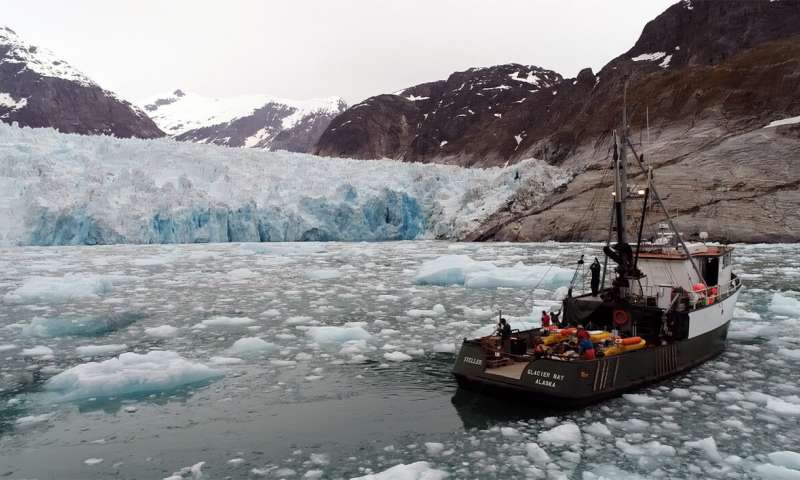The Ice Is Melting Even Faster Than They Thought

The world's glaciers are melting and dumping water into the ocean. If you've read about climate change, you probably know this. But now, once again, the rate at which all that extra water is flowing into the ocean has to be revised upward. Researchers have revealed that ice on the submerged bottoms of ocean-edge glaciers may be melting at a much faster rate — possibly 100 times faster — than current models predict. And that could have serious implications for the rate at which the seas rise.
That's the conclusion of a new paper published today (July 26) in the journal Science. A research team focused on a tidewater glacier, a flowing slab of ice that reaches all the way to the ocean such that the front of the glacier is in the sea. They used sonar to study the melting around LeConte Glacier glacier in Alaska, studying how ice shapes at the bottom of the glacier changed over time. At the same time, they measured temperature, flow rate and salinity changes in the water around it. Their results showed that existing theories of how water melts off the bottom of tidewater glaciers were significantly underestimating how fast ice was turning into water.
"We measured both the ocean properties in front of the glacier and the melt rates, and we found that they are not related in the way we expected," Rebecca Jackson, an oceanographer at Rutgers University who was a postdoctoral researcher at Oregon State University during the project, said in a statement. "These two sets of measurements show that melt rates are significantly, sometimes up to a factor of 100, higher than existing theory would predict." [8 Ways Global Warming is Changing the World]
The bottoms of tidewater glaciers melt in two ways: Rushing "plumes" of rapidly melting water flow off the bottom of the glaciers in coherent patterns that scientists can detect relatively easily. And at the same time, a slower, "ambient" melting process is taking place. Scientists previously believed that this ambient melting accounted for just a small fraction of total melting, and tended to focus on the plumes. But Jackson and her team's work, which compared sonar data to the plume data, showed that this ambient melting has been underestimated by a factor of up to 100.
(A timelapse by Jason Amundson at the University of Alaska Southeast shows the glacier flowing into the water between March 31, 2016, to Aug. 8, 2016.
This work focused on one glacier, Jackson said in the statement, but it can be generalized to help researchers understand glaciers all over the world. Researchers will have to work to fit this information back into existing models, but the upshot is that the seas will rise faster than previously expected.
- Images of Melt: Earth's Vanishing Ice
- The Reality of Climate Change: 10 Myths Busted
- 5 Ways Climate Change Will Affect Your Health
Originally published on Live Science.
Sign up for the Live Science daily newsletter now
Get the world’s most fascinating discoveries delivered straight to your inbox.










